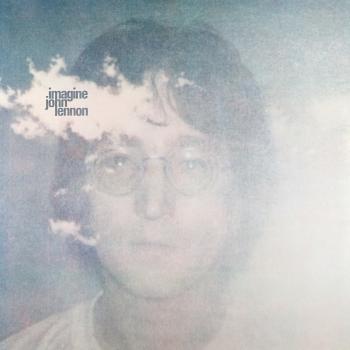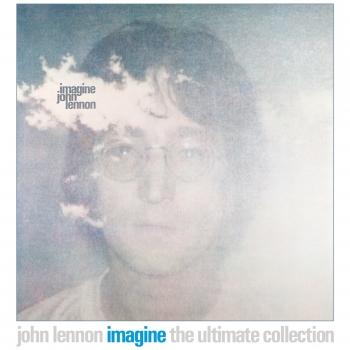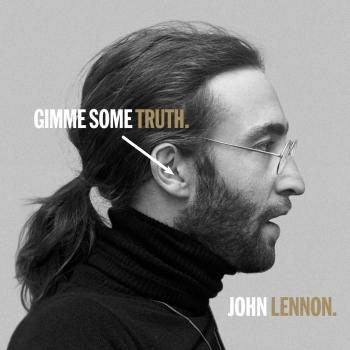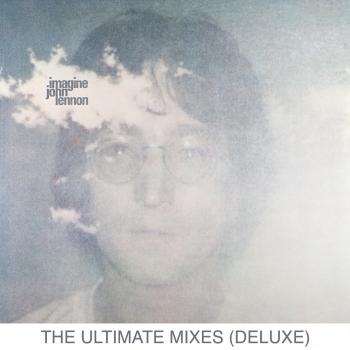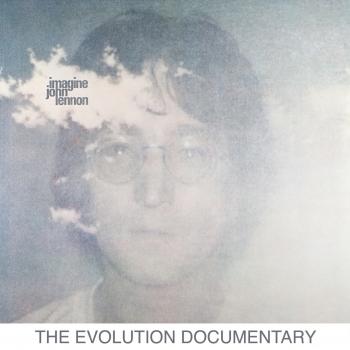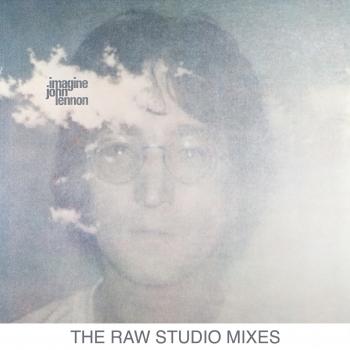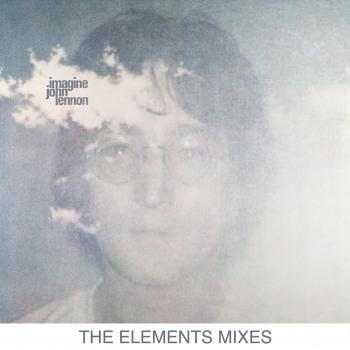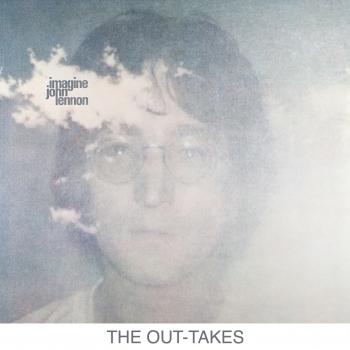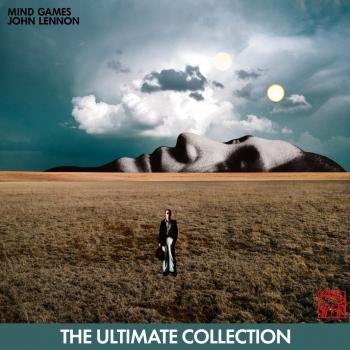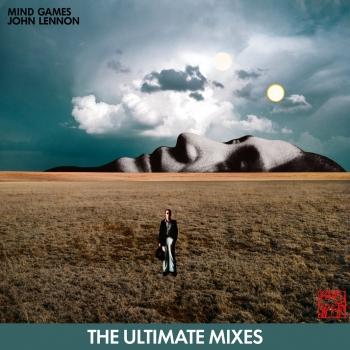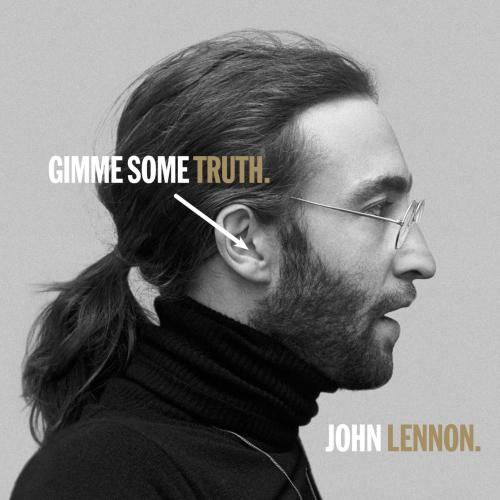
GIMME SOME TRUTH. (Deluxe Remastered) John Lennon
Album info
Album-Release:
2020
HRA-Release:
07.07.2023
Album including Album cover
I`m sorry!
Dear HIGHRESAUDIO Visitor,
due to territorial constraints and also different releases dates in each country you currently can`t purchase this album. We are updating our release dates twice a week. So, please feel free to check from time-to-time, if the album is available for your country.
We suggest, that you bookmark the album and use our Short List function.
Thank you for your understanding and patience.
Yours sincerely, HIGHRESAUDIO
- 1 Instant Karma! (We All Shine On) 03:19
- 2 Cold Turkey 05:00
- 3 Working Class Hero 03:48
- 4 Isolation 02:49
- 5 Love 03:21
- 6 God 04:07
- 7 Power To The People 03:21
- 8 Imagine 03:04
- 9 Jealous Guy 04:12
- 10 Gimme Some Truth 03:14
- 11 Oh My Love 02:42
- 12 How Do You Sleep? 05:38
- 13 Oh Yoko! 04:18
- 14 Angela 04:07
- 15 Come Together 04:17
- 16 Mind Games 04:12
- 17 Out The Blue 03:19
- 18 I Know (I Know) 03:46
- 19 Whatever Gets You Thru The Night 03:27
- 20 Bless You 04:37
- 21 #9 Dream 04:46
- 22 Steel And Glass 04:36
- 23 Stand By Me 03:28
- 24 Angel Baby 03:39
- 25 (Just Like) Starting Over 03:56
- 26 I'm Losing You 03:57
- 27 Beautiful Boy (Darling Boy) 04:03
- 28 Watching The Wheels 03:30
- 29 Woman 03:33
- 30 Dear Yoko 02:34
- 31 Every Man Has A Woman Who Loves Him 03:34
- 32 Nobody Told Me 03:34
- 33 I'm Stepping Out 04:06
- 34 Grow Old With Me 03:19
- 35 Happy Xmas (War Is Over) 03:36
- 36 Give Peace A Chance 04:49
Info for GIMME SOME TRUTH. (Deluxe Remastered)
On October 9th, 2020, Lennon's 80th birthday, in celebration of his remarkable life, a collection of some of the most vital and best loved songs from his solo career.
In everything he did, John Lennon spoke his truth and questioned the truth. An incomparable and uncompromising artist who strove for honesty and directness in his music, he laid bare his heart, mind and soul in his songs, seeing them as snapshots of his current emotions, thoughts and world view. Believing the one quality demanded of himself as an artist was to be completely honest, he did not disguise what he had to say or conform his messages to be more in line with what he felt others thought they should be. Love, heartbreak, peace, politics, truth, lies, the media, racism, feminism, religion, mental well-being, marriage, fatherhood – he sang about it all, and one just needs to listen to the songs of John Lennon to know how he felt, what he cherished, what he believed in, and what he stood for.
Executive Produced by Yoko Ono Lennon and Produced by Sean Ono Lennon, these thirty-six songs, handpicked by Yoko and Sean, have all been completely remixed from scratch, radically upgrading their sonic quality and presenting them as a never-before-heard Ultimate Listening Experience.
Mixed and engineered by multi GRAMMY® Award-winning engineer Paul Hicks, who also helmed the mixes for 2018's universally acclaimed Imagine – The Ultimate Collection series, with assistance by engineer Sam Gannon who also worked on that release, the songs were completely remixed from scratch, using brand new transfers of the original multi-tracks, cleaned up to the highest possible sonic quality. After weeks of painstaking preparation, the final mixes and effects were completed using only vintage analog equipment and effects at Henson Recording Studios in Los Angeles, and then mastered in analog at Abbey Road Studios by Alex Wharton in order to ensure the most beautiful and authentic sound quality possible.
GIMME SOME TRUTH. – named for Lennon's 1971 excoriating rebuke of deceptive politicians, hypocrisy and war, a sentiment as relevant as ever in our post-truth era of fake news, will be available in a variety of formats including as a Deluxe Edition Box Set that offers several different ways to listen to this engrossing 36-track collection with stunning new mixes across two albums containing the Ultimate Mixes in Studio Quality 24 bit/96 kHz HD Stereo.
"John was a brilliant man with a great sense of humour and understanding," writes Yoko Ono Lennon in the preface of the book included in the Deluxe Edition. "He believed in being truthful and that the power of the people will change the world. And it will. All of us have the responsibility to visualize a better world for ourselves and our children. The truth is what we create. It's in our hands."
GIMME SOME TRUTH. traces the arc of Lennon's post-Beatles life and career, bringing together songs from all of his revered solo albums including John Lennon/Plastic Ono Band (1970), Imagine (1971), Some Time In New York City (1972), Mind Games (1973), Walls and Bridges (1974), Rock 'n' Roll (1975), Double Fantasy (1980) and 1984's posthumous Milk and Honey. The collection is bookended with his early non-album singles, kicking off with the one-two punch of "Instant Karma! (We All Shine On)," Lennon's exuberant exhortation about the karmic forces of action/reaction and equality ("we all shine on like the moon and the stars and the sun"), and the electrifying addiction-themed "Cold Turkey," and culminating with the holiday classic "Happy Xmas (War Is Over)" and the anti-war protest anthem "Give Peace A Chance," with its ubiquitous, titular call to action: "All we are saying is Give Peace A Chance."
Sequenced in chronological order by album they were released on, songs on the 36-track version include all of Lennon's biggest hits and showcase his thoughts, beliefs and convictions about everything from peace ("Imagine," "Give Peace A Chance," "Happy Xmas (War Is Over)"), religion ("God"), politics ("Power To The People," "Working Class Hero"), lying politicians ("Gimme Some Truth"), racism ("Angela"), equality ("Woman"), love and marriage ("Love," "Oh Yoko!," "Dear Yoko," "Mind Games," "Out The Blue," "Every Man Has A Woman Who Loves Him," "Grow Old With Me"), fatherhood ("Beautiful Boy (Darling Boy)"), loneliness ("Isolation") and much more. Some of the many other highlights include the sonically sumptuous "Jealous Guy" and "#9 Dream," the acerbic "How Do You Sleep?," the breezy, carefree "Watching The Wheels," a rollicking live recording of "Come Together" that he had originally recorded with The Beatles, the rapturous Elton John collaboration "Whatever Gets You Thru The Night," and the jubilant, bittersweet "I'm Stepping Out."
Like all Lennon projects, intense thought and care went into the making of GIMME SOME TRUTH and the remixing of these treasured songs. As Paul Hicks details in the Deluxe Edition book: "Yoko is very keen that in making The Ultimate Mixes series we achieve three things: remain faithful and respectful to the originals, ensure that the sound is generally sonically clearer overall, and increase the clarity of John's vocals. 'It's about John,' she says. And she is right. His voice brings the biggest emotional impact to the songs." Hicks continues, "The combination of remixing from all the original first-generation multitrack sources and finishing in analogue has brought a whole new level of magic, warmth and clarity to the sound, along with a more detailed dynamic range and sound stage, and we really hope you enjoy the results."
The results speak for themselves and allow Lennon's voice and words to shine on, clearer and brighter, at a time when they are needed now, more than ever. When listened to in sequence, GIMME SOME TRUTH. THE ULTIMATE MIXES. plays both like one of the greatest-ever live Lennon concerts and an emotional telling of his life story, from just after the breakup of The Beatles, to falling in love and marrying Yoko, his peace activism, personal soul-searching, inspiration, celebration, confusion, reunion, fatherhood, his five-year break from music while raising Sean, and his triumphant return into the '80s with two new albums.
Throughout these incredible, timeless songs we experience the many facets of John Lennon: the songwriter, the revolutionary, the musician, the husband, the truth-teller, the dad, the provocateur, the peace activist, the artist, the icon.
John Lennon
Digitally remastered
John Lennon
If John Lennon had only been one of the four members of the Beatles, his artistic immortality would already have been assured. The so-called “smart Beatle,” he brought a penetrating intelligence and a stinging wit both to the band’s music and its self-presentation. But in such songs as “Strawberry Fields Forever,” “Norwegian Wood (This Bird Has Flown),” “Rain” and “In My Life,” he also marshaled gorgeous melodies to evoke a sophisticated, dreamlike world-weariness well beyond his years. Such work suggested not merely a profound musical and literary sensibility – a genius, in short — but a vision of life that was simultaneously reflective, utopian and poignantly realistic.
While in the Beatles, Lennon displayed an outspokenness that immersed the band in controversy and helped redefine the rules of acceptable behavior for rock stars. He famously remarked in 1965 that the Beatles were “more popular than Jesus” – a statement that was more an observation than a boast, but that resulted in the band’s records being burned and removed from radio station playlists in the U.S. He criticized America’s involvement in Vietnam, and, as the Sixties progressed, he became an increasingly important symbol of the burgeoning counterculture.
But it was only after the breakup of the Beatles in 1970 that the figure the world now recognizes as “John Lennon” truly came into being. Whether he was engaging in social activism; giving long, passionate interviews that, once again, broadened the nature of public discourse for artists; defining a new life as a self-described “househusband;” or writing and recording songs, Lennon came to view his life as a work of art in which every act shimmered with potential meaning for the world at large. It was a Messianic attitude, to be sure, but one that was tempered by an innate inclusiveness and generosity. If he saw himself as larger than life, he also yearned for a world in which his ego managed at once to absorb everyone else and dissolve all differences among people, leaving a Zen-like tranquility and calm. “You may say I’m a dreamer, but I’m not the only one,” he sang in “Imagine,” which has become his best-known song and an international anthem of peace. “I hope someday you’ll join us, and the world will live as one.”
Such imagery, coupled with the tragedy of his murder in 1980, has often led to Lennon’s being sentimentalized as a gentle prince of peace gazing off into the distance at an Eden only he could see. In fact, he was a far more complex and difficult person, which, in part, accounts for the world’s endless fascination with him. Plastic Ono Band (1970), the first solo album he made after leaving the Beatles, alternates songs that are so emotionally raw that to this day they are difficult to listen to with songs of extraordinary beauty and simplicity. Gripped by his immersion in primal-scream therapy, which encouraged its practitioners to re-experience their most profound psychic injuries, Lennon sought in such songs as “Mother” and “God” to confront and strip away the traumas that had afflicted his life since childhood.
And those traumas were considerable. Lennon’s mother, Julia, drifted in and out of his life during his childhood in Liverpool – he was raised by Julia’s sister Mimi and Mimi’s husband, George – and then died in a car accident when Lennon was seventeen. His father was similarly absent, essentially walking out on the family when John was an infant. He disappeared for good when Lennon was five, only to return after his son had become famous as a member of the Beatles. Consequently, Lennon struggled with fears of abandonment his entire life. When he repeatedly cries, “Mama, don’t go/Daddy come home,” in “Mother,” it’s less a performance than a scarifying brand of therapeutic performance art. And in that regard, as well as many others, it revealed the influence of Yoko Ono, whom Lennon had married in 1969, leaving his first wife, Cynthia, and their son Julian in order to do so.
The minimalist sound of Plastic Ono Band was significant too. Lennon had come to associate the elaborate musical arrangements of much of the Beatles’ later work with Paul McCartney and George Martin, and he consciously set out to purge those elements from his own work. Co-producing with Ono and the legendary Phil Spector, he built a sonic environment that could not have been more basic – guitar, bass, drums, the occasional piano — whatever was essential and absolutely nothing more. Lyrically, he turned away from the psychedelic flights and Joycean wordplay of such songs as “I Am the Walrus” and “Lucy in the Sky With Diamonds” – as well as his books, In His Own Write and A Spaniard in the Works — and toward a style in which unadorned, elemental speech gathered poetic force through its very directness.
On his next album, Imagine (1971), Lennon felt confident enough to reintroduce some melodic elements reminiscent of the Beatles into his songs. Working again with Ono and Spector, he retains the eloquent plainspokenness of Plastic Ono Band, but allows textural elements such as strings, to create more of a sense of beauty. The album’s title track alone ensured its historical importance; it is a call to idealism that has provided solace and inspiration at every moment of social and humanitarian crisis since it was written.
From there Lennon turned to a style that was a sort of journalistic agit-prop. Sometime In New York City (1972) is as outward-looking and blunt as Imagine was, for the most part, soft-focused and otherworldly. As its title suggests, the album reflects Lennon’s immersion in the drama and noise of the city to which he had moved with Yoko Ono. And as its cover art suggests, the album is something like a newspaper – a report from the radical frontlines on the political upheavals of the day. His activism would create enormous problems for Lennon, however. The Nixon administration, paranoid about the possibility that a former Beatle might become a potent leader and recruiting tool of the anti-war movement, attempted to have Lennon deported. Years of legal battles ensued before Lennon finally was awarded his green card in 1976.
Lennon’s political struggles unfortunately found their match in his personal life. He and Ono split up in the fall of 1973, shortly before the release of his album, Mind Games. He moved to Los Angeles and later described the eighteen months he spent separated from Ono as his “lost weekend,” a period of wild indulgence and artistic drift. Like Mind Games, the albums he made during this period, Walls and Bridges (1974) and Rock N Roll (1975), are the expressions of a major artist seeking, with mixed results, to recover his voice. None of them lack charm, and their high points include the lovely title track of Mind Games; Walls and Bridges’ “Whatever Gets You Through the Night,” a rollicking duet with Elton John that gave Lennon his first number-one single as a solo artist; and the sweet nostalgia of Rock N Roll, a covers album that was Lennon’s tribute to the musical pioneers of his youth. But none of those albums rank among his greatest work.
In 1975, Lennon reunited with Ono, and their son Sean was born later that year. For the next five years, Lennon withdrew from public life, and his family became his focus. Then, in 1980, he and Ono returned to the studio to work on Double Fantasy, a hymn to their life together with Sean. The couple was plotting a full-fledged comeback – doing major interviews to support the album’s release, recording new songs for a follow-up, planning a tour. Then, shockingly, Lennon was shot to death outside the apartment building where he and Ono lived on the night of December 8, 1980. (Anthony DeCurtis). Source: www.johnlennon.com
This album contains no booklet.











